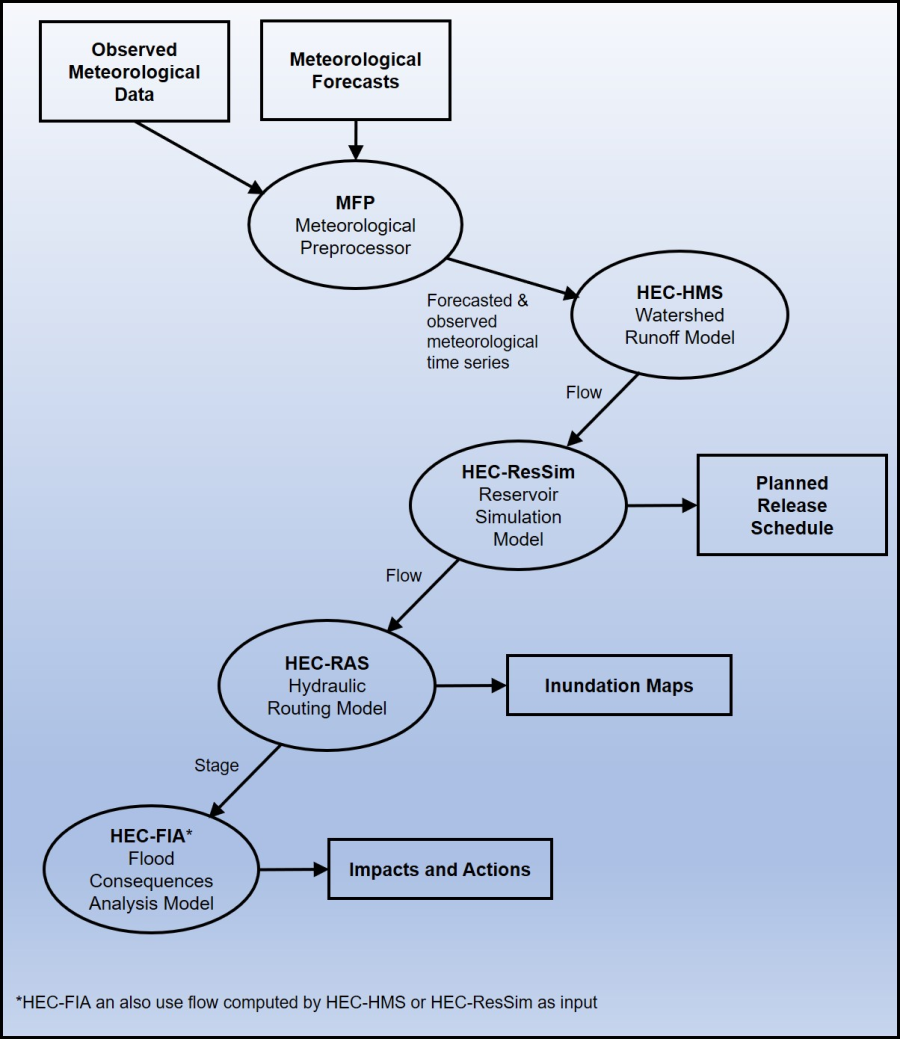The Modeling module for HEC-RTS is the grouping of commands for performing forecasts for a watershed. These commands include: creating and managing forecast alternatives, editing selected model parameters, executing alternatives, and evaluating results. Figure 1 displays the flow of data and information through the software applications involved in a forecast. HEC-RTS has five standard software applications available: the meteorological preprocessors , the watershed runoff model HEC-HMS, the reservoir simulation model HEC-ResSim, the hydraulic routing model HEC-RAS, and the flood consequences analysis model HEC-FIA. These software applications and their inputs and outputs are described in HEC-RTS Overview.

The meteorological preprocessor combines observed precipitation data and future precipitation information into a single precipitation dataset that can be used by the watershed runoff model (HEC-HMS). Using the observed and future precipitation from a meteorological preprocessor (), HEC-HMS computes runoff. HEC-ResSim uses uncontrolled flows (typically computed by HEC-HMS) as input and simulates reservoir releases. In turn, controlled flows (computed by HEC-ResSim) are used as boundary conditions to the hydraulic routing model HEC-RAS. (HEC-RAS can also use flows computed by HEC-HMS or supplemental models as input). HEC-RAS computes stage, which is input to HEC-FIA. HEC-FIA analyzes flood consequences. (HEC-FIA can also use flow computed by HEC-HMS, or HEC-ResSim as input.) Results include impact and action reports from HEC-FIA, inundations maps that can be viewed with RAS Mapper (tool that is part of the HEC-RAS software), and simulated release schedules from HEC-ResSim.